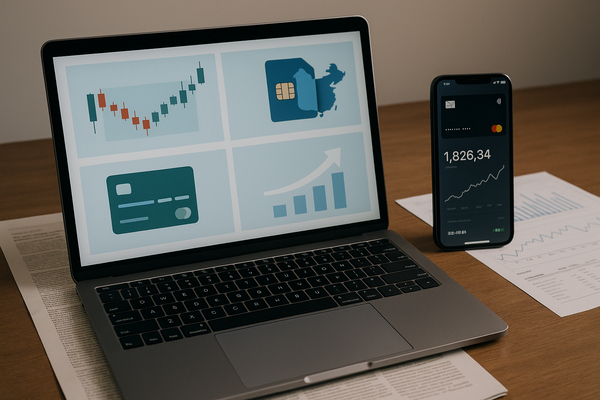
Apple (NASDAQ:AAPL) stock action is the focal point this week, driven by short-term technical chatter and longer-term ecosystem moves. Headlines range from buy-zone technical setups to product and payments extensions in China and the U.S. That matters now because markets are volatile and capital is flowing into AI and infrastructure plays. In the near term, volatility and technical triggers are driving trading decisions. Over the long term, service expansion, payments rails, and supply-chain rules will shape revenue mix across the U.S., China, Europe and emerging markets.
“Market momentum, technical setup and why Apple is back on traders’ screens”
Apple (NASDAQ:AAPL) appeared in 16 separate news items in the latest wire feeds. That frequency shows both investor focus and how company-level developments intersect with broader market moves. One headline flagged Apple near a new buy point as dip buyers returned during stock-market volatility. Technical chatter matters in the short term because it concentrates order flow. For investors watching daily action, a buy point shapes entry timing. For corporate strategy observers, repeated media coverage signals product and partner news that can sustain momentum.
Macro drivers are also influencing sentiment. TrendForce projects AI-related cloud and server investment to jump from about $420 billion in 2025 to more than $520 billion in 2026 — a surge that re-routes investor attention to infrastructure and platform players. Meanwhile, new Chinese export rules on rare earths require overseas firms to obtain government approval before exporting products containing certain Chinese-origin rare earths. That policy step is already weighing on technology supply-chain assumptions in the U.S., Europe and Asia.
“Product and payments moves extend Apple’s ecosystem — from Alabama classrooms to China eSIM”
Apple (NASDAQ:AAPL) is showing the connective tissue between hardware, services and partner programs. The company provided technology support to a statewide workforce initiative in Alabama — the Alabama Digital Education Network — backed by more than $16 million in new state funding. That program will set up learning spaces in rural communities and highlights Apple’s role in education and workforce development in the U.S.
On payments, Payroc announced it now enables U.S. merchants to accept Tap to Pay on iPhone. The Payroc Mobile iOS app lets merchants accept contactless cards, Apple Pay and other wallets using only an iPhone. That expansion accelerates in-store acceptance without extra terminals and increases use-cases for Apple Pay and iPhone-based commerce.
Internationally, Apple is preparing to launch iPhone Air pre-orders in China after local eSIM approval. That will mark Apple’s first eSIM-supported model in the Chinese market and could reduce friction for device activation and carrier choice there. In consumer products, travel-tech maker July launched CaseSafe suitcases with fully integrated tracking created “in partnership with Apple and Google.” These items illustrate how Apple’s hardware and ecosystem partners are folding into adjacent markets — from education to travel — across regions.
“Wider tech currents: AI spending, chip deals and supply-chain policy that touch Apple’s outlook”
Apple’s headlines sit inside a broader tech cycle. Cloud and AI capital spending is accelerating. Major infrastructure deals are being reported: Broadcom (NASDAQ:AVGO) announced a strategic collaboration to sell AI accelerator hardware to OpenAI, a move that included the purchase of roughly 10 gigawatts of AI accelerator hardware. Oracle (NASDAQ:ORCL) will deploy 50,000 AMD (NASDAQ:AMD) GPUs to scale its AI cloud capacity. Those deals are driving demand for AI-capable datacenter components and reshaping procurement patterns for hyperscalers and cloud customers.
At the same time, China’s new rare-earth export controls — which require government approval for exporting products containing trace amounts of certain Chinese-origin rare earths — highlight geopolitical friction that could raise costs or slow deliveries for hardware makers globally. Companies with supply chains across Asia, Europe and the U.S. now face an extra layer of export scrutiny. That has direct relevance for smartphone supply chains and component sourcing.
For Apple, the interplay is material. Near-term product rollouts, payments rollouts and education partnerships help support services and hardware attachment rates. Longer term, higher datacenter spending, chip supply dynamics and rare-earth rules will shape component costs and competitive positioning in global markets.
- “Apple featured in 16 news items this cycle, underscoring concentrated media and market attention”
- “Payroc’s Tap to Pay on iPhone removes terminal costs for merchants and expands Apple Pay usage”
- “Apple’s China eSIM approval enables smoother carrier activations for the iPhone Air launch”
In sum, the current news flow ties short-term trading talk to long-term strategic threads. Apple’s product and payments extensions are practical, revenue-linked actions. At the same time, rising AI infrastructure demand and tighter export rules on key minerals are altering the competitive and cost backdrop for global device makers and cloud providers. Observers should watch product adoption, payments volume trends, and supply-chain disclosures for the clearest signals of where this story goes next.












